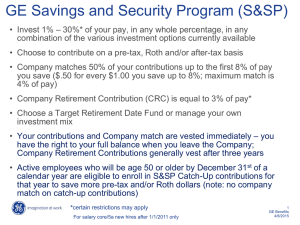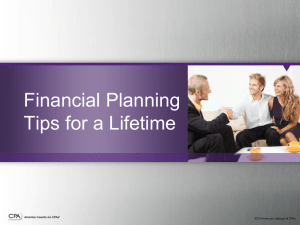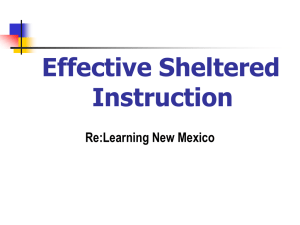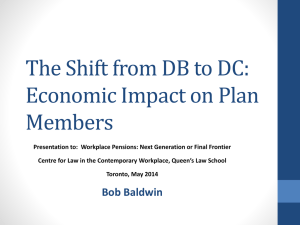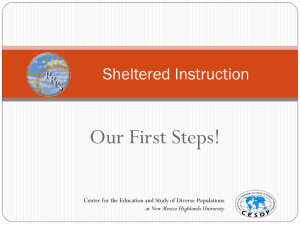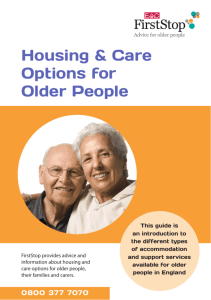PUBLICv2AgeUK 21 Feb 13 Presentation
advertisement
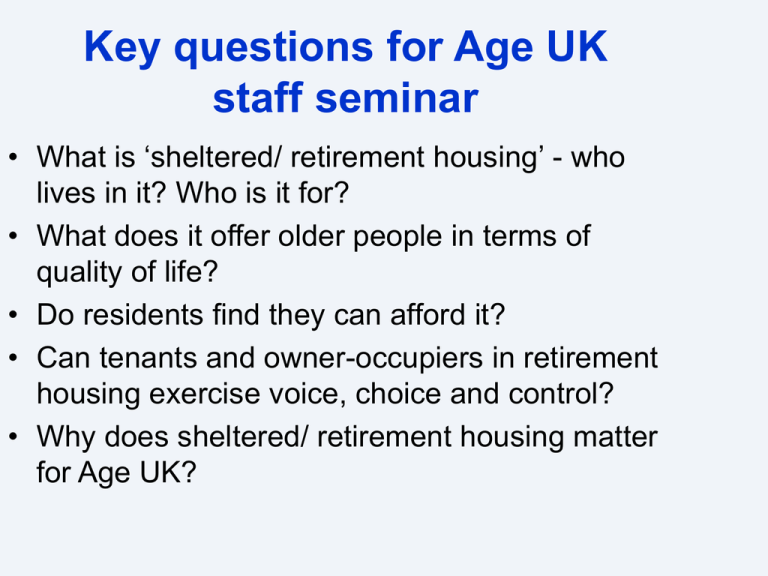
Key questions for Age UK staff seminar • What is ‘sheltered/ retirement housing’ - who lives in it? Who is it for? • What does it offer older people in terms of quality of life? • Do residents find they can afford it? • Can tenants and owner-occupiers in retirement housing exercise voice, choice and control? • Why does sheltered/ retirement housing matter for Age UK? JRF-funded research on housing for older people: • Focus on older people with high care/ support needs • Emphasis on quality of life and value for money • Sheltered & retirement housing: desk review of evidence, data analysis, drawing on Age UK studies • Housing with care: affordability for self-funders, and how provider organisations work together • Interviews with around 100 owner-occupiers and tenants, visits to over 20 schemes across UK What is sheltered and retirement housing? • Over half a million dwellings housing around 5% of the older population • Age-restricted (eg 55/60+), communal facilities • Around ¾ for social rent, around ¼ for sale • Only 10% is housing with on-site care • Buildings should be designed for older people eg good location (shops, transport); lifts to upper floors • BUT wide range of dwellings, costs, facilities and staff presence - from poor quality sheltered bedsits to spacious 2/3-bed housing in new developments What does sheltered/retirement housing offer older people? • Traditional model: limited on-site support staff member (‘warden’ or house manager) and alarm system • Private developments: still have on-site house manager and most residents in age-range 70s - 80s • Council/ housing association sheltered housing: • Withdrawal of on-site wardens/scheme managers, many residents now have limited (or no) staff contact • Some still popular, some hard to let (eg bedsits, no lifts) • More younger people (under 65) & different needs (eg mental health, homeless); more very old (85+); more with serious disability/ ill-health & high care needs What does housing with care offer older people? • HWC offers an active independent lifestyle choice &/or an alternative to residential care • ‘Your own front door’, more space, flexibility/ choice (care, activities) and tenancy/ ownership rights • Spacious buildings designed for older people eg wheelchair standard, wet-room showers, lifts, extensive communal facilities (eg gym, restaurant) • 24/7 on-site staffing, range of activities, on-site care team available for tailored 1-1 care as needed • Some HWC has specialist staff and residents with specific disabilities (eg dementia, learning disability) What does it offer older people in terms of quality of life? • Sheltered housing: little recent research evidence, but significant resident concerns about loss of ‘wardens’, and tensions between more diverse tenant mix (age, needs, lifestyles) • Owner-occupied retirement housing (leaseholders): suits some ‘downsizers’ but concerns include small 1-bed flats, high charges and ‘exit fees’ when selling/ moving out • Housing with care: mostly high levels of satisfaction from extensive research; enables couples to stay together even with ill-health or disability; can be expensive, especially for selffunders with high care costs The affordability ‘maze’… • Difficult for older people, relatives and advice agencies to understand/ explain the complexity of costs in retirement housing… • especially in housing with care (with its higher costs)… • and in leasehold housing for owner-occupiers • Accessing welfare benefits and state help can be crucial for self-funders – especially if costs rise faster than incomes, or savings run out Who may find it harder to afford retirement housing? • Leaseholders (especially in more expensive housing with care) • Residents under state pension age (including mixedage couples): working-age benefits much lower • Single people (especially women: often no or low occupational pension/savings) • Residents who moved in as a couple and then partner dies (especially if the carer dies) • Couples where one partner needs a care or nursing home and the other still has the costs of retirement housing/housing with care Voice, choice and control in sheltered and retirement housing • Voice: limited engagement of older people: in housing and care policy-making; and within individual retirement housing schemes • Choice: limited range of options for housing, care and support in later life (tenure, location, limited models); lack of access to information/ advice for many older people and families • Control: in theory, housing rights should give more control, but difficult to enforce without support, information, advice, advocacy Why does sheltered/retirement housing matter to Age UK? • Influencing, research and policy work: includes ‘Nobody’s Listening’ about warden changes; leaseholders on high charges and exit fees; resident-led Inquiry on retirement housing • National services: specialist advisers for enquiries and advice about sheltered and leasehold housing; links to local older people forums; information sheets • Local services: information, advice, advocacy, lobbying about local issues



